You have probably heard of ramen, a Japanese noodle dish, but what is ramen exactly?
In this article we will define what it is, look at different types of ramen, learn about ramen culture and its history in Japan, and clarify a common misconception around the famous dish.
Stick around until the end for how to order ramen and the customizations you can make, and a pro tip you can use when you visit a ramen shop in Japan.
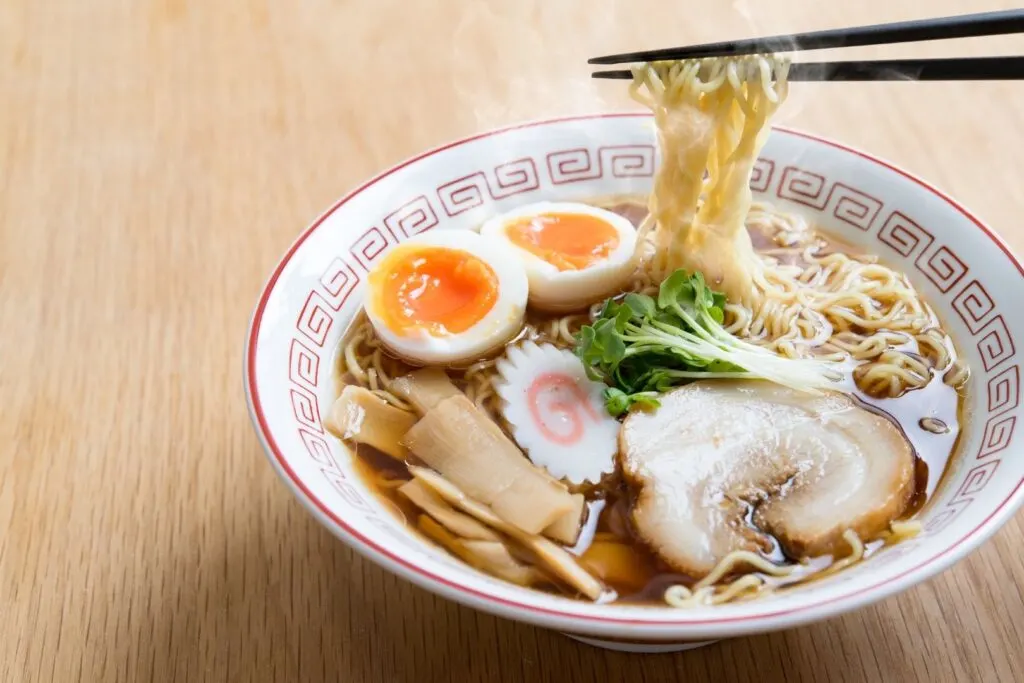
Table of Contents
What is ramen? What are ramen noodles made of?
Ramen (ラーメン) is a type of noodle, specifically wheat-based noodles made from wheat flour, salt, water and kansui – an alkaline liquid or powder consisting of potassium carbonate and sodium carbonate that gives the noodles their elasticity.
At the same time, ramen is the name of a dish using those noodles, usually with hot soup and toppings. The ramen noodles can vary in thickness and consistency, and may be straight or curly, but are generally made from the above ingredients.
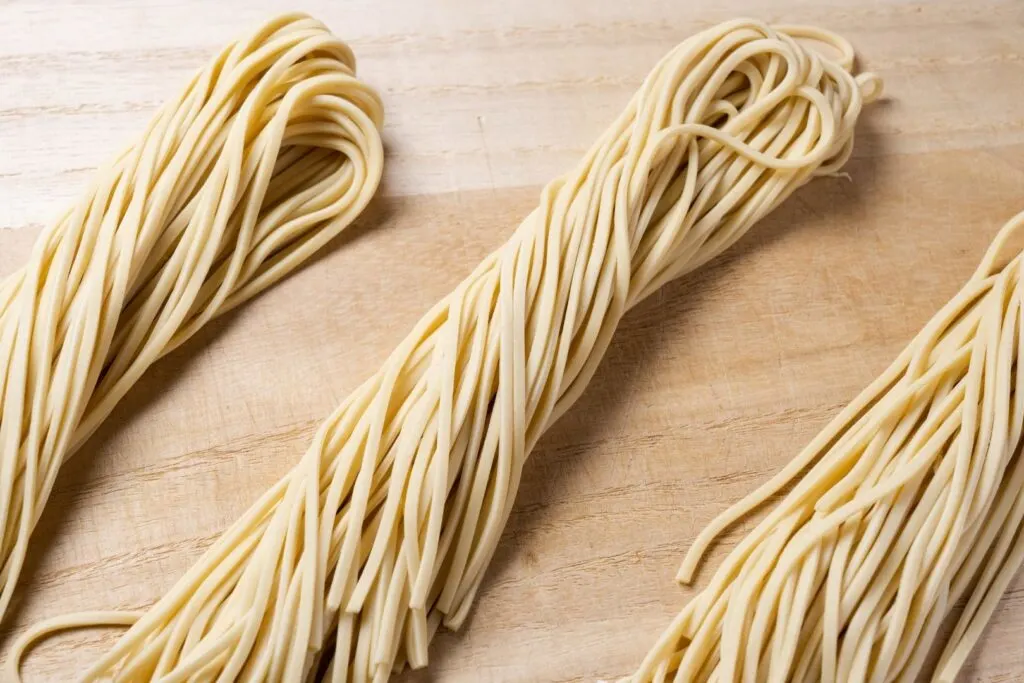
What ramen is not
A foodie friend who lives in London once shared with me his efforts to make ramen at home – which I was totally impressed by, since ramen is mostly eaten outside of the home here in Japan (apart from instant ramen) and making it is generally thought to take a lot of effort, especially to make a good broth – but he had used udon noodles!
Although it looked scrumptious, I had to point out to him that sadly it cannot be called ramen since he did not use ramen noodles. Given that ramen is a name of a dish that uses ramen noodles specifically, you cannot make noodle soup with soba, udon, somen, pasta or any other type of noodle, even if using a typical ramen broth, and call it “ramen”.
It goes the same for soba, udon and somen. Since each dish name refers to the type of noodle used, you cannot, for example, use soba in place of udon and call it an udon dish.
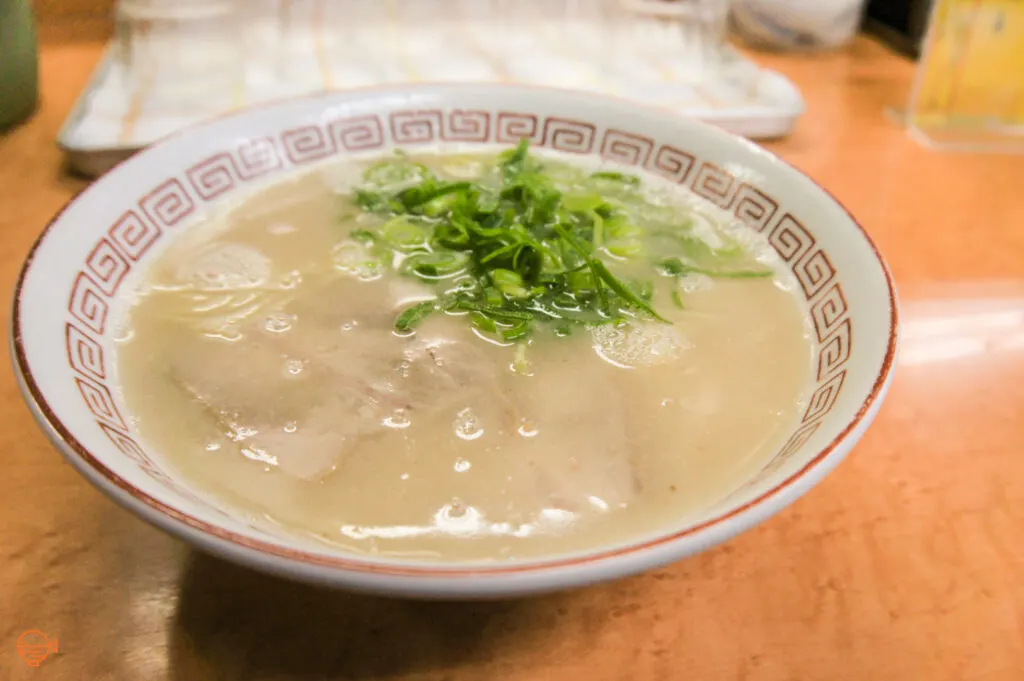
Ramen culture in Japan
In Japan, ramen is a quick meal you can eat with minimal waiting time, so it is a popular lunch option for office workers.
Because of its richness and carb content, and the tendency for ramen-ya (ramen shops) to be open until late, it is also the perfect food to eat at the end of a night out in town as well. We call this shime, meaning closing, indicating the end of the drinking for the night.
In Japan, ramen is often sold at tiny ramen-ya with only counter seats. It is very common to have a ticket system where you buy a ticket for the type of ramen you want at the entrance of the shop, with a ticket machine, and you give the staff standing behind the counter the ticket once you are given a seat.
This way the staff do not need to handle cash while cooking the ramen, as these tiny shops are often only staffed with one or two people.
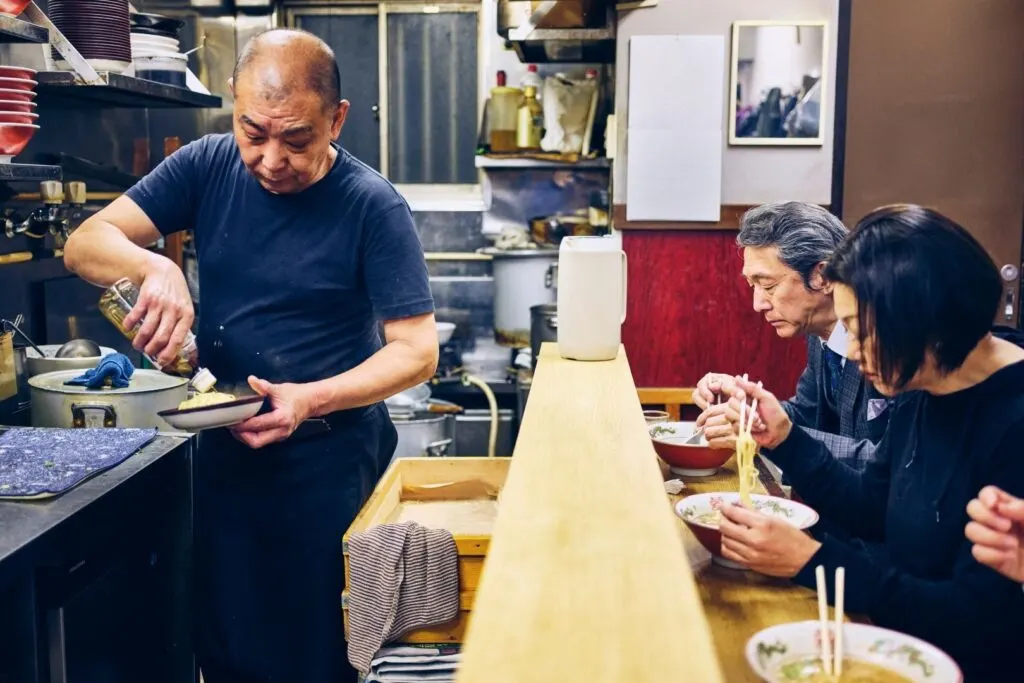
History of ramen
Ramen has Chinese origins and used to be called Chū-ka soba (Chinese soba) or Shina-soba (no longer used much because of colonialist implications of the word Shina which also means China), but is now recognized as a Japanese dish as over the years the Japanese adopted the dish and created a whole culture around ramen.
As Japan opened its ports (Yokohama, Kobe, Nagasaki and Hakodate) for trade with the outside world at the end of the Edo period (1603-1868), Chinese noodle dishes came into Japan, which are the origins of ramen noodles in the country. During the Meiji period (1868-1912), Chinese cuisine became more popular and many Chinese restaurants opened even outside of the Chinatowns in these port cities.
In 1910, a Japanese restaurateur Kanichi Ozaki opened a Chinese restaurant “Rairaiken” in Asakusa, inviting 12 Chinese chefs from Yokohama’s Chinatown. The restaurant’s main menu included ramen, and the restaurant was a huge hit. This helped popularize the now famous dish in Japan.
After WWII, there were many people who had lived in China who returned to Japan and started selling ramen in market stalls called yatai as they were a relatively easy business to set up.
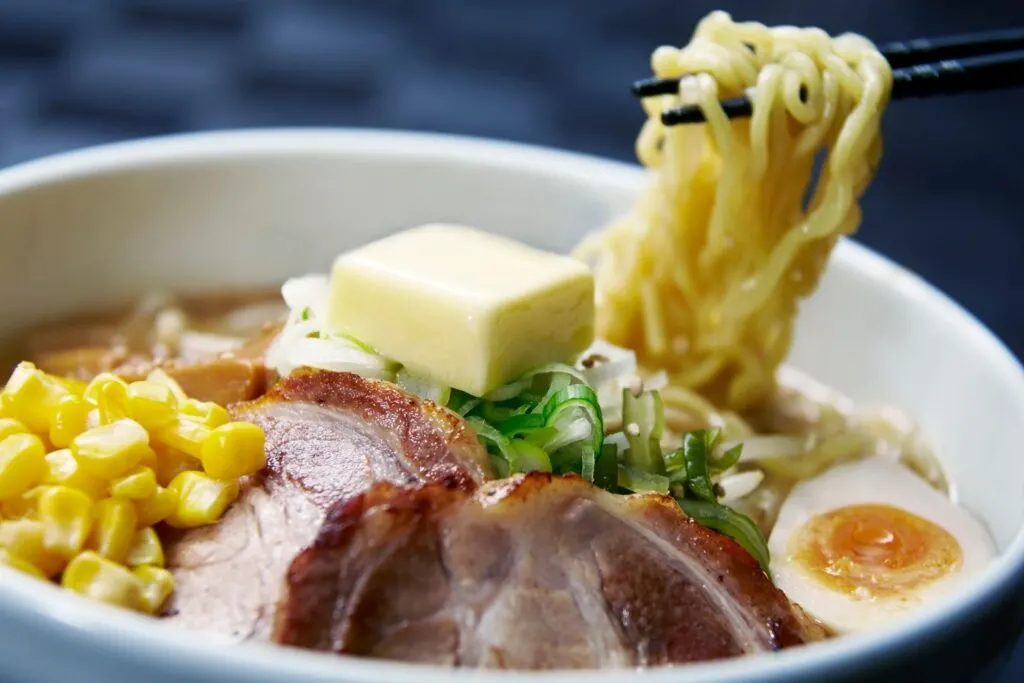
Types of ramen
There are many ways to categorize ramen and there are many different combinations of soup type, flavor, toppings, noodle thicknesses and serving styles.
There are regional variations which refer to particular styles of ramen, so when you are visiting a new area famous for its ramen, it is worth trying their unique take on the dish.
I have listed some of the common types of ramen here:
By flavor
Soy sauce (醤油, shōyu)
Salt (塩, shio)
Miso (味噌)
Curry (カレー)
By soup type
White soup (白湯, paitan)
Clear soup (清湯, chintan)
Tonkotsu (豚骨出汁, pork bone stock)
Chicken bone stock (鶏ガラ出汁)
Seafood stock (魚介出汁)
Beef bone stock (牛骨出汁)
By region
Hakata ramen (tonkotsu with extra thin noodles)
Sapporo ramen (miso ramen with corn and vegetables)
Hakodate ramen (shio ramen)
Kitakata ramen (with flat and matured, high water content noodles)
Yokohama style (or commonly called ie-kei, tonkotsu with soy sauce) and many more.
By dish type/cooking method
Tsukemen (つけ麺, the soup comes in a separate bowl and you dip the noodles)
No-soup (汁なし, shiru-nashi) ramen
Instant ramen
Cup-ramen
While not as common, in light of international interest in ramen, there are some halal ramen as well as vegetarian and vegan ramen shops, especially in bigger cities.
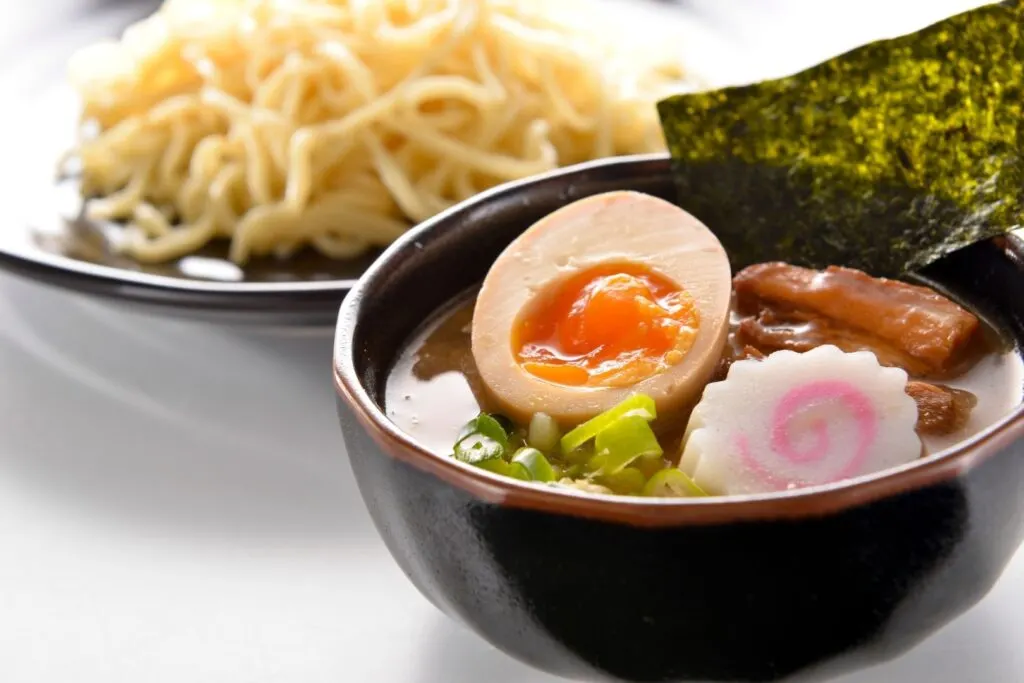
Customizing your ramen order
Some ramen-ya allow you to customize some or all aspects of your noodle order. Here is some useful vocabulary to listen out for or look for on the menu.
Noodle thickness
Noodle thickness is 麺の太さ (めんのふとさ) in Japanese and is pronounced Men no Futosa.
Thick – 太麵 (ふとめん), futomen
Regular – 普通 (ふつう), futsū
Thin – 細麵 (ほそめん), hosomen
Noodle firmness
Noodle Firmness is 麺の硬さ (めんのかたさ) in Japanese and is pronounced Men no Katasa.
Standard choices are:
Hard – かため, katame
Regular – 普通 (ふつう), futsū
Soft – 軟らかめ (やわらかめ), yawarakame
Concentration of the broth
Aji no Kosa (味の濃さ, あじのこさ) refers to how strong or concentrated the soup is.
Strong – 濃いめ (こいめ), koime
Regular – 普通 (ふつう), futsū
Light/diluted – 薄め (うすめ), usume
Oiliness of the broth
Oiliness of the broth is referred to as Abura no Ryō (脂の量, あぶらのりょう).
More – 多め (おおめ), ōme
Regular – 普通 (ふつう), futsū
Less – 少なめ (すくなめ), sukuname
As you can see, futsū or ‘regular’ can be used in any scenario so if you aren’t sure and just want the standard option, it’s an incredibly useful word to remember for ordering food in Japan. Simply say, “futsuu de onegai-shimasu.”
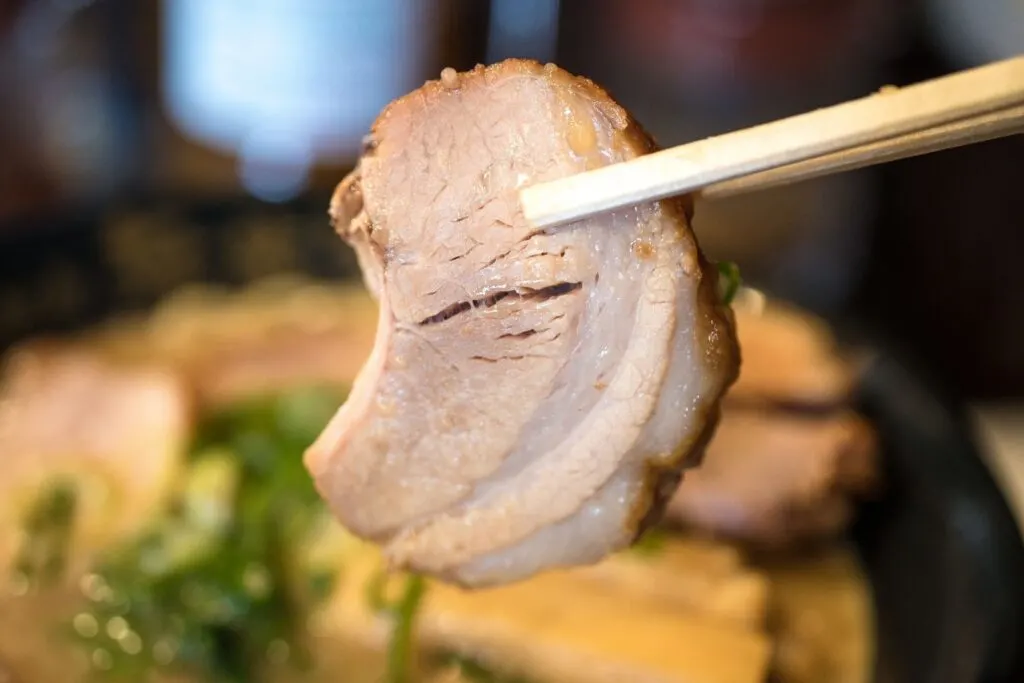
Common ramen toppings
When you order your ramen, it will typically come with some set toppings. However, if you’d like to add more toppings, you can usually do so at an extra charge.
Common toppings include:
Chāshū (チャーシュー) – slices of braised pork (usually belly)
Ajitama (味卵) – shortened version of ajitsuke tamago, 味付け卵 – seasoned hard boiled eggs
Menma (メンマ) – lactate-fermented bamboo shoots
Nori (海苔 or のり) – dried seaweed
Negi (葱 or ねぎ) – chopped green/spring onions
Narutomaki (鳴門巻き or なると巻き) – a type of kamaboko (Japanese fish cake) that typically features a cloud-like edge and a pink swirl in the center
Insert the item you want in the blank space and say, “________ o toppingu shite kudasai.”
Pro tip: If you finish your ramen and are still hungry, you can ask for extra noodles (in this case, you should leave some soup in your bowl). This is called kaedama (替え玉, かえだま) and you can ask for it by saying, “Kaedama onegai-shimasu.”
Kaedama usually costs just a couple of hundred yen extra (around US$2) and is a great way to avoid food waste as you can start with a usual serving and see how you go. If you know you are super hungry from the get-go, however, simply order oomori (大盛り, おおもり) for a larger than average size serving of noodles. Smaller than average servings are called sukuname (少なめ, すくなめ) and regular is nami-mori (並盛り, なみもり).
To ask for a large/small serving, say “Oomori/sukuname ni dekimasu ka?”
Interested in learning more about ramen? You can visit the Shin-Yokohama Ramen Museum and learn about the history and different types of ramen for an entrance fee of just 380 yen. You can even try making your own ramen noodles from scratch (at a cost of 4,000 yen, extra reservation required), which you can either eat there or take home to cook yourself.
What’s your favorite type of ramen?
Pin me for later
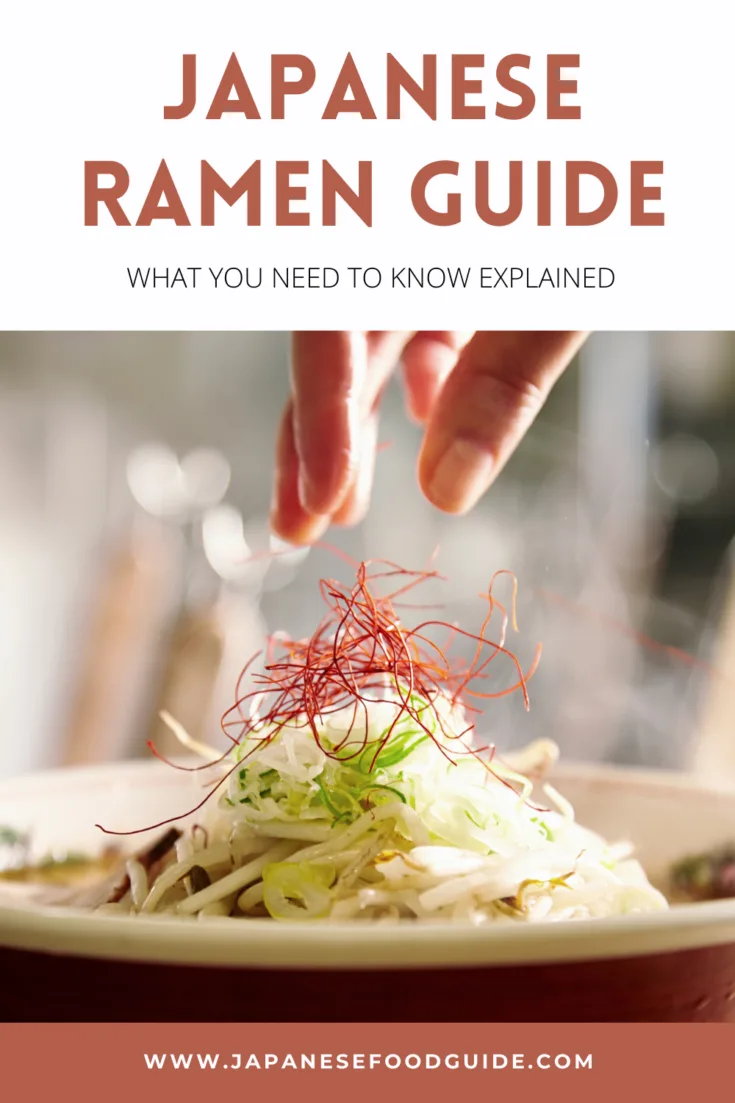
Madoka Suganuma is a freelance qualitative market researcher and a cultural insights analyst based in Tokyo with an expertise in Food & Beverages.
Having split her time between Europe and Tokyo in her formative years, Madoka is on a mission to uncover and provide insight into Japanese culture and people. Madoka enjoys learning about different cultures through food and hopes that readers can have fun learning about Japanese food culture through Japanese Food Guide.

Fawzia
Sunday 1st of August 2021
Wonderful and very informative read. Enjoyed it very much. Love Ramen.